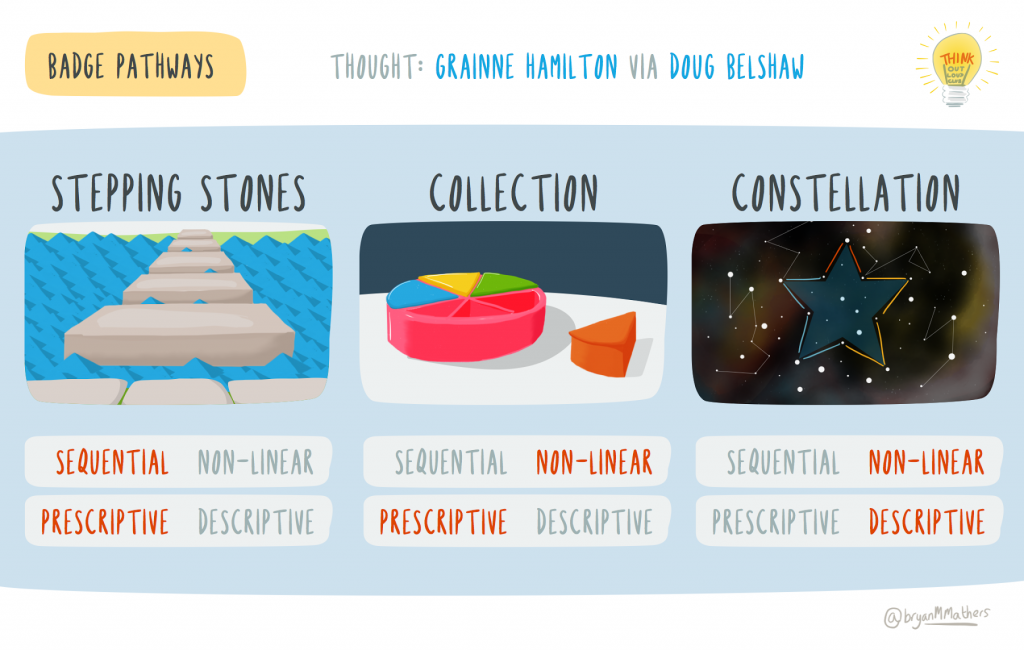
This is my second post in regards Open Badges in response to the course offered by Think Out Loud Club. My first post can be viewed here.

There are so many different ways that you can create and allocate Open Badges. Whether it be high or low stakes learning, badges offer a flexible form of micro-credentialling that is really up to your own imagination. One way of making sense of an Open Badge is as a traditional certificate with built-in breadcrumbs. Another difference is that badges are often a part of an ecosystem. Although they can be created individually, their true potential is ability to interconnect and provide different pathways for learning.

The most obvious pathway is the stepping stones aproach. Sequential in nature, it involves doing one step at a time in a prescriptive manner. See for example, Doug Belshaw’s kanban badges using Trello. Another option is where badges are a part of a collection. Like the game Trivial Pursuit, this is where several achievements are grouped together in a non-linear manner. Perscriptive in nature, collections can be linked with the completion of standards or levelling up. In contrast to perspective badge ecosystems, constellations offer a more open-ended approach where users can choose from a range of possibilities, carving out any number of pathways. This is conducive to life-long learning and offers the potential to write your own learning story. Open to borrowing from different providers, it is for this reason that it is descriptive rather than prescriptive.
To make more sense of these differences, lets consider the act of blogging. Although sites like WordPress have badges built in, these are more about engagement and gamification than the actual skills and competencies involved. Approaching it as a set of stepping stones, you could create a space, write a post, add an image and embed different content. This is often the way that Edublogs structures their challenge and the manner is clearly outlined. Thinking about it as a series of collections, you could have a series of levelled badges, each a combination of smaller steps completed in any order. So a Basics of Blogging Badge might include micro-credentials such as creating a blog, writing a post, making an about me page and using tags and categories to organise. As a constellation, a wide range of badges with support, but without set structure, allows users to create their own blogging pathway. This might include such skills as adjusting the theme, improving engagement, turning a blog into a book or self-hosting a blog. You could complete all of the badges or some of them, in whatever order you like.
If you are looking for a guide for creating a badge ecosystem, DigitalMe have a canvas which outlines all the different requirements in a clear manner.
So what about you, do you have an example of a badge ecosystem? Or any thoughts on badges for blogging? As always, comments welcome.
If you enjoy what you read here, feel free to sign up for my monthly newsletter to catch up on all things learning, edtech and storytelling.
Why use Open Badges? #OB101 by Aaron Davis is licensed under a Creative Commons Attribution-ShareAlike 4.0 International License.

Mentions